

The Cumbrian Coast Railway
The furness railway and the cumbrian coast railway.
The Furness Railway runs along the coast of Cumbria, starting at Lancaster in Lancashire, then via Carnforth (Lancashire) , Arnside, and Grange-over-Sands to Barrow-in-Furness. The Cumbrian Coast Railway continues along the coast from Barrow-in-Furness via Millom, Ravenglass, Whitehaven and Workington to Carlisle.

The Furness Line
- Arnside Railway Station
- Grange-over-Sands
- Barrow-in-Furness
The Cumbrian Coast Line
- Askham-in-Furness
- Kirkby-in-Furness
- Foxfield Railway Station
- Ravenglass Station
- St Bees Station

- Cumbrian Coast Railway
- Wikipedia – Cumbrian Coast Line
- Photos of the Cumbrian Coast Railway
- Whitehaven Station before demolition .
- Maryport Station before demolition .
Return to menu :
- Western Lakes and Coast
[wpgmza id=”591″]

- BIBLIOGRAPHY
- FR STATIONS

The Furness Railway owed its origins and later prosperity to iron. The company was promoted largely by two large local land owners, the Duke of Buccleuch and the Earl of Burlington (later the 7th Duke of Devonshire), to carry slate and iron ore from their mines and quarries to the quays at the then hamlet of Barrow for shipment to growing towns and industries elsewhere in Britain.
The railway when it opened in 1846 consisted of two crossing routes: from Kirkby to Piel on Piel Pier on Roa Island, the latter reached via a privately-owned causeway (and from where steamers provided a link with Fleetwood), and from Dalton to Barrow.
The link eastwards, to the Lancaster & Carlisle Railway at Carnforth, and which was to become so vital to the emerging Furness Iron and steel industry after the discovery of the Bessemer process for large-scale conversion of iron into steel, was promoted and built by an independent company, the Ulverstone & Lancaster Railway (U&LR). The route included crossings of the estuaries of the Rivers Kent and Leven necessitating two long cast iron viaducts engineered by James Brunlees who was later to go on to design the similar, but longer, Solway Viaduct in the north of the county. The line was completed in 1857 to form the final link in the chain of railways round the Cumbrian coast. The U&LR was absorbed by the Furness Railway in 1862, having been working by its western neighbour from its opening.
After the beginning of iron smelting at Barrow ironworks by H W Schneider in 1859 the expansion of economic and railway activity was immense. Bessemer steel making started in 1864, the FR took over the Whitehaven & Furness Junction Railway in 1866, Devonshire Dock was opened in 1867, Buccleuch Dock in 1873, with corresponding growth in the minerals and iron and steel traffic carried by the railway. One of the main products was steel railway lines to build new railways round the world. The town of Barrow and its industries mushroomed, all under the guiding hand of the FR and its directors. Particularly influential was James Ramsden, later knighted, who was closely associated with the railway for 50 years, first as locomotive superintendent, then as general manager from 1850 and becoming managing director in 1863, a post he was to occupy for another 33 years. Other ironworks at Askam, Carnforth, Millom and Ulverston all generated large amounts of traffic for the railway.
However, by the 1880s new steel making processes and imported iron ores broke the monopoly of Furness and West Cumberland hematite over the steel trade and the boom was over. Although the Furness Railway extended its influence in West Cumberland with the joint takeover of the Whitehaven Cleator & Egremont Railway with the LNWR in 1878, and a working agreement with the new Cleator & Workington Junction Railway the following year, expansion generally came to an end after the completion of an avoiding line and new station in Barrow in 1882.
A change in emphasis became apparent. The late 19th century brought an increase in leisure time which few but the rich had been able to enjoy before; the five and half day working week had become increasingly accepted from the 1860s, statutory bank holidays were introduced from 1871, and by the 1890s most workers enjoyed at least one week's holiday a year, while at the same time many people had more money to spend. With the great asset of the Lake District embraced by the railway itself the Furness company had long provided for Victorian tourists, but from 1896 its new general manager, Alfred Aslett, saw the greatly increased potential for this traffic to compensate for the decline in industrial traffics. The company thus set about developing much improved services and facilities which would be publicised with considerable flair.
Though the shipyard gradually developed to become the principal industry of Barrow from the 1890s, iron and steel continued to be a very important, though dwindling, source of traffic for many years to come. With the progressive exhaustion of local iron ore resources, contraction became inevitable. The first of the iron works to close was Askam in 1919, Carnforth in 1931, North Lonsdale at Ulverston in 1938 (though to continue as a foundry), the massive works at Barrow in 1963, and finally Millom in 1968.
Today, the docks in Barrow see little commercial activity other than the occasional nuclear flask carrier and shipbuilding activities which have long concentrated on submarines for the Royal Navy. The Furness main line is shorn of its branches, with no originating freight except at Sellafield. The line does continue to provide one of the most delightful railway journeys in England as it skirts round the shores of Morecambe Bay and Irish Sea, seen on one side, with occasional dramatic views into the Lake District on the other.
See also The Furness Railway in 1921 , extracts from The Railway Year Book.
For further reading see Bibliography
Two Together
Riding the Scenic Cumbrian Coast Railway
Last updated on
The Cumbrian Coast Railway connects Carlisle to Barrow-in-Furness along the scenic Cumbrian coast .
It’s no secret that we love a good train ride, so when Northern had a sale in January we snapped up tickets on the Cumbrian Coast Railways from Carlisle to Barrow-in-Furness for £2 each! It was a glorious train ride on a glorious sun-dappled day and would have been perfect if Northern had bothered to clean the windows of the coaches and let passengers enjoy the vistas of the Irish Sea.
The watery light of winter mornings cloaked us as we stood shivering on the platform at Carlisle waiting for the train doors to open. It was a tiny two-coach Northern train. The doors open shortly and we found seats by the window (sit on the right to see the sea). Soon we were off, shooting west towards the coast.
There are 25 stops (some of them are request stops) along the 2.5 hours ride, some with very interesting sounding names such as Aspatria and Corkickle. Between Carlisle and Maryport, the train traverses the verdant Cumbrian landscape. After Maryport which is popular with families for the Lake District Coast Aquarium , the train turns south towards Workington and soon you can see the Irish Sea. What a moment of joy when we first get a glimpse of the waters!
Also read : Check out our guides to car-free Lake District holidays: Things to Do In Borrowdale (Car-free Edition) and 4 Days in the Lake District (Central Lakes) by Public Transport .
Cumbrian Coast Railway
If you are interested, here’s a map of the stops on the Carlisle to Barrow-in-Furness line. From Barrow-in-Furness, you can continue onwards to Lancaster.
Tickets are £17.80 for an Off-Peak Day Return. Day ranger tickets are available from Northern for £24 (May, 2023).
Here are some trivia about some of the stops on the Cumbrian Coast Railway:
- Wigton grew from an ancient settlement developed around the Roman fort, MAGLONA . You can still see the ruins of the fort.
- The name Aspatria is part-Scandinavian: from askr, an ash-tree, plus the name Patrick, and means “[place by] St Patrick’s ash-tree”.
- According to the Community Rail Cumbria website, “ Harrington heralded an innovative new approach to enabling easier access to trains. DDA compliant ramps were invented to assist access to the trains where platforms were too low. The town gave its name to the invention as the “Harrington Hump” in 2008 and now many stations and rail users across the country benefit.”
- The port of Whitehaven dates back to the 17th century and was once the third largest in the UK with trade links all over the world.
- Corkickle has an interesting name for sure! According to Whitehaven News, “On the site of what was Whitehaven Castle (on the Flatt Walks), it was rumoured that there were ancient ruins of Druidical origin, where their great-council was held. Amongst the ruins were a number of stones believed by the local populace to be enchanted warriors and these were given the names “Dead ‘Ring’ or ‘Circle’” or ‘Corpse Circle,’” from which the name Corkickle is allegedly derived, it being a part of the town adjacent to the Flatt Walks.” However, Ekwall suggests that this name was originally given to the spur of the hill between Corkickle and the river Keekle, and that the first element is the Middle Irish corr , ‘point, peak.’
- The Coast to Coast Walk begins at St. Bees .
- Pearson’s 1992 railway guide describes the Nethertown station as seemingly “suspended between the cliff face and the sands”.
- The sand dunes at Drigg are a Site of Special Scientific Interest.
- From Ravenglass station, you can ride the scenic Ravenglass & Eskdale Railway one of England’s oldest and longest narrow-gauge railways.
TIP : If you have time, get a day ranger ticket and stop at some of the charming seaside towns along the way.
Quaint stations pass by. Fields full of sheep. Whitewashed cottages. Coastal villages. We rush through attractive landscapes with promises of returning and walking the Cumbria coastal path. After Millom where there is an interesting museum containing a model railway highlighting the heritage and social impact of the Cumbrian Coast line, we move north, inland. Marshy land borders the banks of the Duddon estuary, a Ramsar site and an important birding area where you can species such as include pintail, red knot, common redshank, red-breasted mergansers, Eurasian oystercatchers, ringed plover, dunlin, and Eurasian curlew. The train makes a U-bend at Foxfield and we are again travelling south, past Kirkby and Askam and soon we are in Barrow-in-Furness.
Have you travelled on the Cumbrian Coast Railway?
Like it? Pin it!
Share this:
- Click to share on Facebook (Opens in new window)
- Click to share on Twitter (Opens in new window)
- Click to share on Pinterest (Opens in new window)
- Click to share on WhatsApp (Opens in new window)
- Click to email a link to a friend (Opens in new window)
- Click to print (Opens in new window)
Mohana & Aninda
Mohana and Aninda are travellers and advocates for car-free travel. Two-together is their travel blog where they document their travels to encourage and inspire readers to seek solace in new places, savour local cuisines, and relish both unique and everyday experiences. When they are not travelling, they are actively researching trip ideas and itineraries, obsessing over public transport timetables, reviewing travel budgets, and developing content for their blog. They are currently based in Edinburgh and exploring Scotland and beyond by public transport.
FEATURED POSTS
Moving to Scotland, UK: A Complete Guide
Edible souvenirs to bring home from india, best things to eat in malaysia: malaysia food guide, search posts here.
Latest Stories
7 Days in Serbia Itinerary: The Best of Northern Serbia
3 days in belgrade for food and culture lovers, things to do in subotica, best indian restaurants in edinburgh, best places to see cherry blossoms in edinburgh, three reservoirs walk: pentland hills, leave a reply cancel reply.
This site uses Akismet to reduce spam. Learn how your comment data is processed .
You are using an outdated browser. Please upgrade your browser or activate Google Chrome Frame to improve your experience.

Helping to build the future of Cumbrian railways
Cumbrian coast line.
Explore the hidden places and quaint seaside spaces of the dramatic Cumbrian Coastline – the home of varied wildlife, historical sites and Cumbrian heritage.
Furness Line
Leave the car at home and climb aboard the Furness Line – the quickest & easiest way to soak up the sights of Morecambe Bay’s pretty beaches, striking sandbanks and dramatic cliffs.
Traversing through the classic tourist hotspots of Windermere, Kendal and Oxenholme – the Lakes Line is perfect for visitors travelling to and from the Lake District, now a World Heritage Site.
Here at Community Rail Cumbria we love our railways. Not only do they they provide the vital transport links between Cumbrian communities but they also reveal another side to the most beautiful County in England.
There are three lines to choose from – the Lakes Line takes you into the heart of the Lake District at Windermere; the Furness Line crosses the wide estuary at Arnside where the River Kent enters Morecambe Bay and the Cumbrian Coast Line hugs the Irish Sea as it links Carlisle to Barrow-in-Furness.
We hope our website will give you all you need to know about our unique lines to help you to explore magnificent Cumbria by rail.

It's cheaper than you think!

Barrow-in-Furness - St Bees
Off-Peak Day Return
Carlisle - Ravenglass
Buy Train Tickets Online
Northern Tickets Northern --> TransPennine Avanti West Coast National Rail Enquiries Trainline
Hidden Places and Tranquil Spaces

© Railway Wonders of the World 2012- 23 | Contents | Site Map | Contact Us | Cookie Policy

The Furness Railway
Modern Developments in the Furness Railway System
RAILWAYS OF BRITAIN - 54
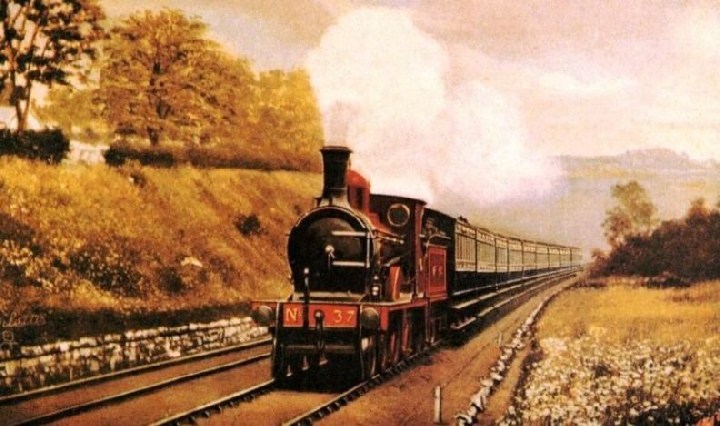
A STANDARD EXPRESS TRAIN on the Furness Railway, hauled by 4- 4- 0 No. 37.
FOR the first fifty years of its existence the Furness Railway had been almost solely a mineral line, and so prosperous was it that there had arisen little need to unduly trouble about the active development of the passenger traffic. A service of passenger trains more or less sufficient for local needs was run over the railway, and the then management did not consider itself called upon to do more in this direction. But there came a time when the rich beds of haematite iron ore, which had abounded in the district traversed by the Furness Railway, became almost exhausted, and with their disappearance it looked as if the prosperity of the Furness Railway would also disappear. At this critical period, Mr. Alfred Aslett was invited to assume managerial command of the system. What success has attended the numerous improvements introduced by Mr. A. Aslett this chronicle of the development of the Furness Railway shows.
Mr. Aslett, whose managerial life had, up to this time, been largely spent in the arduous task of cultivating passenger traffic on railways with little pecuniary resources to aid his efforts, such as the Eastern and Midlands, and the Cambrian, came to Barrow with the valuable experience gained in the hard school of making bricks without straw.
The Furness Railway, fortunately, enjoyed good financial credit, so that the many improvements that were necessary to bring the system up to the standard of a first- class railway could be initiated as opportunity offered, and did not have to be deferred until such time as funds permitted.
It was at once seen that to make the railway remunerative it was necessary to develop it upon the passenger side. The district served by the Furness Railway lends itself splendidly to the purpose; the line has the practical monopoly of two of England’s finest lakes. One, Windermere, is by far the most charming of our own lakes, and Coniston is equal to most of the other sheets of water in the Lake district. With two such assets the Furness Railway offers strong inducements to the tourist and holiday- maker, but these are not the only scenic attractions the line possesses. Almost for the whole length its main line skirts the coast, first the beautiful northern shore of the extensive Morecambe Bay, and further north it traverses the shore of the Irish Sea along the coasts of Lancashire and Cumberland.
No time was lost in judiciously calling attention to the geographical advantages enjoyed by the Furness Railway, and at the same time steps were taken to provide suitable accommodation for the visitors it was desired to attract to the district.
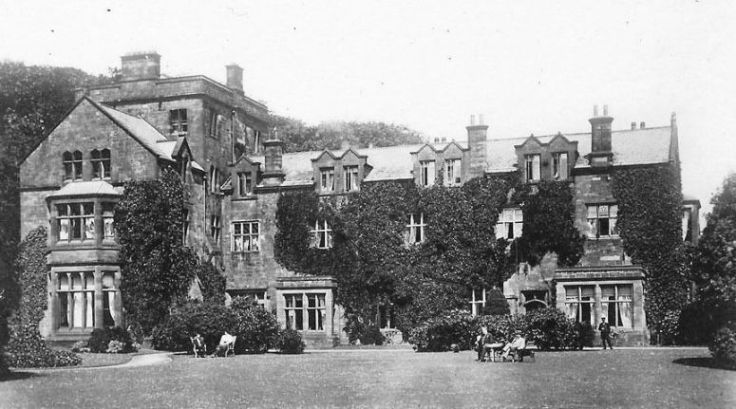
THE FURNESS ABBEY HOTEL.
The passenger rolling stock was of a character suitable for the local traffic, four- wheel coaches of the first, second and third class; but as the visitors to the “Paradise of Tourists”, as the delightful district served by the Furness Railway is appositely styled, were to be drawn from afar, and would consequently travel over the London and North- Western or Midland Railways , it was highly desirable that their initial acquaintance with the Furness Railway should be of a pleasant character. It would have been bad business to offer tourists railway coaches inferior in character and luxury to those by which they had journeyed to Furness territory, so the light four- wheel coaches were speedily replaced by modern bogie vehicles, many of them corridor coaches, built and fitted in the best style, lighted by electricity on Stone’s system, comfortably upholstered, and in every way equal to, and in some respects superior to, the rolling stock of the Furness Railway’s big neighbours at Carnforth. The dingy livery of dull lake tint gave place to one of rich royal blue and cream — a combination of colours for coaches, surpassed for artistic merit by none of our railways, and only equalled by the cream and green of the Furness Railway’s neighbour, the Maryport and Carlisle Railway.
The second class also disappeared from the system, and it is thought by many that the second class will no doubt be abolished by all progressive railway companies in the near future—tourists and holiday makers even to the Lakes are of a democratic temperament in the Twentieth Century, and largely patronise the third class.
No time was lost in increasing the tourist facilities and providing liberal accommodation at extremely low fares. The whole district abounds in delightful scenery, and is crowded with memories of poets and artists and of men who have inscribed their name and fame upon the annals of our land. Wonderful ingenuity has been exercised in devising tours to the places of beauty and interest served by the Furness Railway. When Mr. Aslett assumed command the tours were not many in number; this summer they total twenty, and combine rail, steamer and coach travelling. The fares are extremely low, as will be seen by examples we give later on.
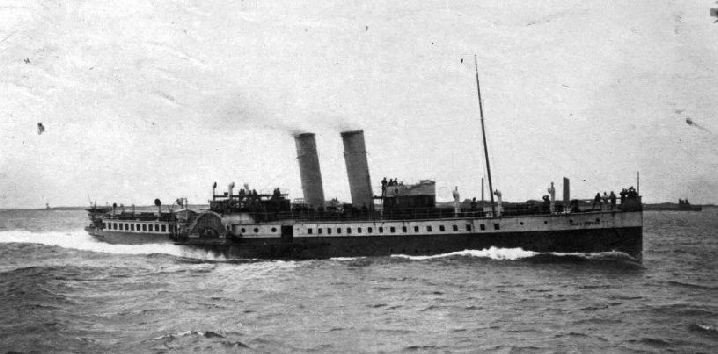
THE PADDLE STEAMER Lady Moyra .
We have already said that nowadays visitors to the English Lakes belong largely to the democracy, but across the broad Morecambe Bay — at Blackpool — are to be found in many thousands, on holidays bent, the dwellers of the manufacturing districts of Lancashire and Yorkshire. Why, queried Mr. Aslett, should not these sons and daughters of toil enjoy the pleasures of a visit to our beautiful English Lakes? The Furness Railway determined to give them the opportunity, so in 1900 the paddle steamer Lady Evelyn was purchased, and in the summer of that year she commenced to ply between Barrow and Fleetwood, with through bookings to and from Blackpool.
By means of judicious advertising at Blackpool, an interest in the beautiful Lake District was awakened amongst the visitors to Blackpool, and during the first year or so no less than 28,000 passengers were conveyed by the Lady Evelyn .
The popularity of the sea, train and lake trips from Blackpool by the Furness Railway steamers and trains speedily became known amongst the visitors to Blackpool, and in 1903 it became necessary to lengthen the Lady Evelyn so that she could carry a larger number of passengers. Two years later a second and larger boat, the Lady Margaret , was put on the Barrow- Fleetwood service, so speedily had the Lake tours grown in popularity. These two steamers continued to perform the service till 1909, when the Lady Margaret was sold, and a longer paddle steamer, the Philomel , took her place, only to be superseded in 1910 by the Lady Moyra , a still larger paddle boat. During last year no less than 128,000 passengers were carried between Fleetwood and Barrow by the Furness Railway’s steamers; whilst during the present season, last year’s huge total is expected to be surpassed.
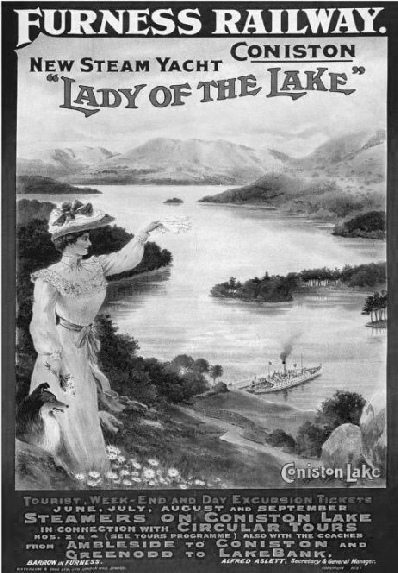
Lady Moyra length 245 ft. ; Beam 29 ft. ; 2,900 h.p. ; Speed 19 knots ; 1,015 passengers.
Lady Evelyn length 200 ft. ; Beam 24 ft. 1 in. ; 1,600 h.p. ; Speed 16 knots ; 714 passengers.
The steamers perform three regular trips in each direction every day, the passage normally occupying hours, although the Lady Moyra has made the trip in 45 minutes.
FURNESS RAILWAY ADVERTISING for trips on Coniston Lake.
One of the most popular of the tours from Blackpool is that known as the “Outer Circular Tour”, performed by train, sea steamer, steam yacht on Windermere, and coach. The whole distance covered is 115 miles, the fare charged being but 8s. Leaving Blackpool at 10.5 a.m., the tourist is conveyed 11 miles by train to Fleetwood, followed by a 16- mile sea voyage to Barrow, then 20 miles by train to Lake Side, Windermere, next there is the delightful voyage of 11 miles by steam yacht down the lake to Ambleside, succeeded by a coach drive of 9 miles to Coniston, 21 miles in a train brings the tourist back to Barrow, the steamer leaving for Fleetwood at 6.45 p.m., Blackpool being reached at 8.27. It is hard to imagine a more delightful day’s outing; the many methods of locomotion employed preventing any feeling of travel fatigue. The coach ride from Ambleside to Coniston forms an important part of the programme, and when it is stated that on occasions 300 people make this tour at the same time, it will be seen that this number, although not large for the train or steamer, is important when coaching accommodation has to be provided, as many as fifteen four and six- horse coaches and char- a- bancs being necessary to carry so large a party.
Not only has the sea steamer traffic been developed, but very considerable improvements have been made in the Windermere and Coniston steam yachts. On Windermere a large and palatial new yacht — the Swift — was put into service in 1900. This vessel is certified for the large number of 780 passengers, her principal dimensions being:— Length, 150 feet; breadth, 21 feet; engines of 400 horse power; speed, 15 knots. The remainder of the Windermere fleet of the Furness Railway consists of the Tern , carrying 633 passengers; Cygnet and Seal , each 336 passengers; Swan , 442 passengers; and the Raven , a cargo steamer. All these boats are propelled by screws.
For some fifty years the service on Lake Coniston has been performed by the Gondola , a comfortable steam yacht of unusual outline, accommodating 225 passengers. In 1907 it was decided to increase the steamboat accommodation on Coniston Lake, and the Lady of the Lake was constructed for the service. She is a fine yacht of graceful outline, 90 feet long, with a breadth of 15 feet. Her engines develop 240 horse power, her speed being 11½ knots. The Lady of the Lake carries 380 passengers.
For the convenience of private parties wishing to cruise on Windermere, the Furness Railway recently acquired the steam yacht Britannia . The saloons of this vessel are handsomely decorated and furnished. She accommodates 122 passengers, and can be hired by the day or half- day at short notice, any station- master on the Furness Railway accepting an order for the use of the Britannia up to 5 o’clock on the evening previous to the day the vessel is required, provided she is not already engaged.
The cost of holiday travel on the Furness Railway and its lakes steamers has been made almost a negligible quantity. On Windermere one can spend a week on the steamers, all day long, for 6s., or 8s. saloon. Family parties are catered for on an even more liberal basis. A weekly lake steamer season for two is 10s., or 14s. saloon; for three, 14s. and 19s.; for four, 17s. and 23s.; and for five, 20s., or 27s. Saloon.
In 1909 tourists’ weekly tickets were introduced over the whole of the system, including the Coniston and Windermere steam yachts. These tickets, which are issued from May 1st to September 30th each year, are available for an unlimited number of journeys during the time they are valid.
A weekly ticket costs 18s. first class, and only 12s. third class; whilst if ordinary return tickets were purchased for the journeys, they would cost 28s. 10d. first class and 17s. 4d. third class for but one journey in each direction, whereas with the seven- day tourist season ticket a visitor can travel as much as he or she likes every day for a week for 18s. first class, or 12s. third class. The system is divided into four groups for these weekly seasons. One, covering the main line between Silverdale and Whitehaven, a distance of 71 miles, costs gs. third or 13s. first class. A second, covering the railway between Lake Side and Coniston (40½ miles) and the steamers on Coniston Lake and Windermere, is 10s. third class and 14s. first class. The third covers the railway between Silverdale and Lake Side and Coniston (56 miles) and the steamers on the two lakes at a cost of 11s. third class and 16s. first class for the week; whilst, as already stated, for is. additional third class and 2s. first class, the tourist has the run of almost the whole Furness Railway and the steamers on the two lakes.
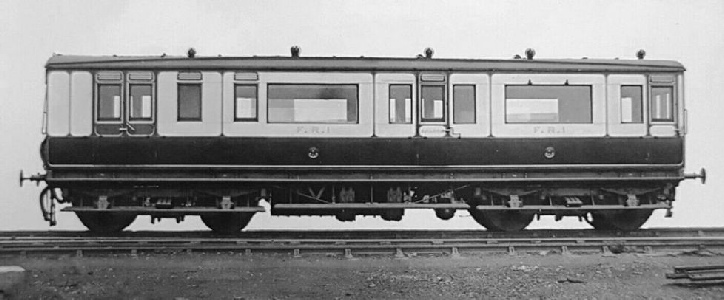
FURNESS RAILWAY SALOON coach No. 1.
The latest development in Furness Railway tours is that which includes a visit to George Romney’s early home. The cottage is situate about two miles from Barrow, and is reached by road vehicle. A few years ago the cottage, which is situate on high ground with picturesque surroundings, was about to be demolished to work the building stone beneath its foundation, when Mr. Aslett conceived the idea of preserving it because of its association with one of our most famous protraitists. The cottage has been restored in facsimile, and already a large collection of pictures, engravings, and articles associated with George Romney are in the Museum attached to the cottage. The curator is simply steeped in legends of the great painter and his works. The grounds attached to the cottage have been laid out in a pleasant manner, and a tea pavilion is about to be added for the convenience of worshippers at the shrine of this famous lake district artist.
In July 1911 the Furness Railway issued a new time- table on a plan that is unique in the United Kingdom. The whole of the time- tables are printed on one or the other of the sides of one long sheet of paper. By a clever method of folding the head- line of one or another of the time- tables appear at the top of each fold, and all the head- lines show at one opening, half at the top directly beneath one another, and the other half at the bottom, the small space between the top and bottom folds being utilised for the sailings of the Barrow- Fleetwood Steamers. The whole sheet folds into a compass small enough for the breast pocket, a map of the Furness Railway also is included, and the whole is bound in a stout cover of attractive design.
A feature of the Furness Railway that cannot fail to favourably impress visitors is the substantial nature and artistic character of the stations. Taken as a whole, it would be difficult to find railway stations that excel those on the Furness Railway in these particulars; Grange, Lake Side, Ulverston, Furness Abbey, and Barrow (Central) are types of what stations of various classes ought to be.
The Central Station, Barrow, is the largest on the system; it was enlarged in 1906. It now consists of four platforms and four roads, and covers over 15 acres of ground. The main platforms are each 575 feet in length.
Considerable attention has been given to the signalling during the twentieth century, a noticeable feature in train protection being the illuminated speed restriction boards which are fixed at all spots where permanent speed restrictions are in force. These illuminated boards have been in use on the Furness Railway for several years. Recently some other railways have made use of them, but these safeguards are far from being in general use on our railways.
During recent years very large sums of money have been expended on improving and strengthening the permanent way ; indeed, almost the whole line has been rebuilt with steel rails weighing 88 lbs. per yard, against the 80½ lbs. in use in 1900; the sleepers and ballast also have received attention. The main line of the Furness Railway, running as it does along the coast, crosses many tidal estuaries, so that viaducts and embankments are fairly frequent. These are being strengthened, and in some cases rebuilt, the viaduct at Eskmeals being the most recent to receive the attention of the engineer. This viaduct, which is 933 feet in length, was constructed in 1868, and this year has practically been rebuilt. First the horizontal portion or viaduct proper was renewed, and then it was decided to rebuild the vertical piers supporting the viaduct, a work of much difficulty and needing much skill, as it had to be carried out without closing the line for traffic, or even withdrawing any portion of the train service.
The extensive docks at Barrow form an important portion of the system, the water area being 299 acres, of which about 200 acres form the Cavendish Timber Dock, which has recently been leased for naval airship purposes, Vickers’ Naval Airship which was successfully launched in May 1911, having been constructed in a building erected in the Cavendish Dock. The other docks at Barrow consist of the ‘Ramsden’, ‘Devonshire’, and ‘Buccleuch’; the entrance lock to the Ramsden Dock is 100 feet wide, and warships of the super Dreadnought type can easily be accommodated in this dock, and also in the Buccleuch Dock, the water passage way to which was widened in 1910 from
80 to 100 feet for the purpose of affording accommodation for the largest warships. The length of the quays totals 2¼ miles; the quays are equipped with all modern apparatus for efficiently and rapidly dealing with import and export traffic of every description. A mammoth electric crane, which can lift 150 tons, has been installed on the quay of the Buccleuch Dock.
We have already mentioned that the present passenger rolling stock is all modern, and of the most down- to- date character; the goods vehicles have also received considerable additions of wagons of special type; such as the 40- ton bogie iron ore wagon and the 20- ton 4- wheel ore wagon with patent bottom door fastening, the operation of which discharges the whole load simultaneously. Four- wheel open wagons, with a tare of only 6½ tons, have been constructed, and in use since 1906, for carrying a load of 15 tons; early in which year a special type of flat 4- wheel truck, with a long wheel base, was put into service for conveying wood for pulping for paper manufacture from the Barrow Docks to the pulp works. The trucks have a tare of only 5½ tons, and can convey timber 25 feet in length.
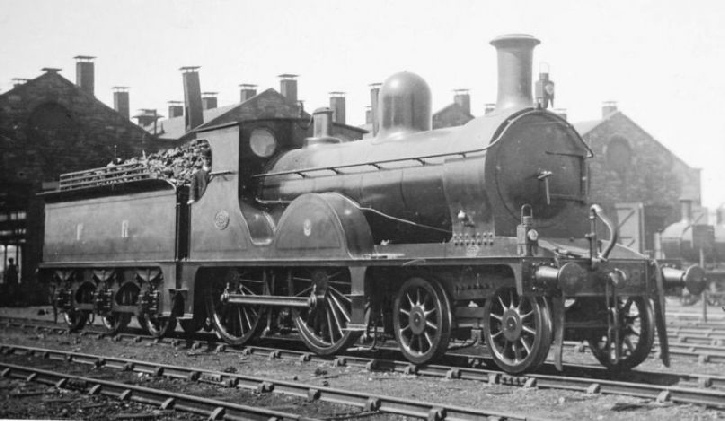
ONE OF THE STANDARD TYPE OF 4- 4- O express passenger locomotives of the Furness Railway.
The remarks as to the modernising of the passenger and goods rolling stock apply with equal emphasis to the Locomotive Department. When Mr. W. F. Pettigrew, the Loco., Carriage, and Wagon Superintendent, assumed control of the Barrow Works in 1897, the locomotives were mostly of small size and power, several having been in work since the line was opened over fifty years previously. In this connection we may mention here that one of these old 4- wheel engines —No. 3, known as “Old Coppernob”, built by E. Bury in 1846 — has been preserved by Mr. Aslett, and is erected on a pedestal, enclosed by an iron and glass erection, in the yard of Barrow Central Station.
Mr. Pettigrew’s first design was for a 6- wheel coupled goods engine, followed in 1901 by a 4- wheel coupled passenger locomotive with leading bogie and 6- wheel tender, as illustrated above.
In 1904 the 0- 6- 2 design of tank engine was brought out, followed in 1907 by another class of engine of similar design , but of larger dimensions. In 1907 also Mr. Pettigrew introduced the 0- 6- 0 class of tender goods engines, illustrated by No. 6, whilst in 1910 the 0- 6- 0 design of tank locomotive, illustrated by No. 24, was put into service.
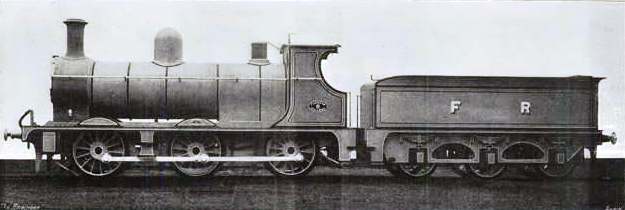
No. 6, ONE OF THE STANDARD 0- 6- 0 goods locomotives of the Furness Railway.
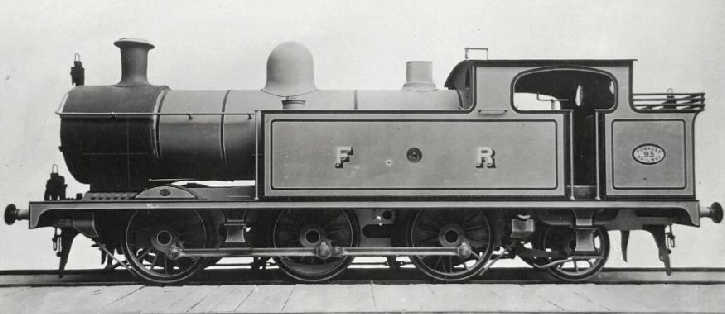
No. 93, AN 0- 6- 2 locomotive of the Furness Railway.
The leading dimensions of these types of locomotives are given in the table below.

Mr. Pettigrew has also rebuilt many of the older engines with larger boilers, carrying a higher steam pressure,and added to their equipment modern fittings that enable them to perform present- day duties with efficiency and economy of fuel and water.
Lastly, we have the application of the superheater to some of the engines. This apparatus is not of the German boiler- tube type; it is of the smokebox variety, and known as the new Phoenix Superheater; an advantage of which is that it can be fitted to almost any existing locomotive at small expense. The first Furness Railway engine fitted with the Phoenix Superheater was No. 120, fitted in 1908.
Towards the end of 1909 it was decided to fit up four more engines — goods engines Nos. 18 and 14, and passenger engines Nos. 35 and 34 were selected.
Engine No. 18 was fitted and put to work in January, 1910, and No. 14 in June of the same year. These two engines were put on the heavy goods trains running between Carnforth and Sellafield, and Carnforth and Whitehaven, they are still working these trains and the results have been very satisfactory, even better than expected. The average consumption for the engines fitted with the Phoenix Superheater, after running 24,352 miles, being 40.5 lbs. per mile against an average of 53 lbs. for similar engines not fitted with the Superheater and running the same trains, or a net saving of 12.5 lbs., giving 23.5 per cent. The statement set forth below shows how these figures are arrived at.
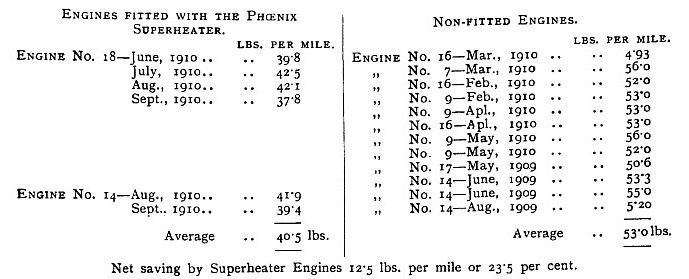
A reference to the lengthy and successful career of the General Manager will form a fitting close to this account of his activities during recent years.
Mr. Alfred Aslett, who is a Justice of the Peace for Lancashire, and has had a life- long experience of railway working, was born in York, and received his education in that city. His father was a Divisional Superintendent of the Great Northern Railway . For some twenty years he occupied various positions on the Great Northern Railway, and in 1884 was chosen as the Traffic Manager of the Eastern and Midlands Railway (now the Midland and Great Northern Joint Railway ). On this system he worked strenuously for seven years, and, despite the thinly populated district through which the line runs, and the powerful opposition of the Great Eastern Railway , he succeeded in considerably improving the prospects of this struggling line. So successful was he that seven years later (in 1891) he was asked to try his skill on a larger system of railways — the Cambrian. On the Cambrian Railways Mr. Aslett fulfilled the offices of Secretary as well as that of General Manager. After nearly five years at Oswestry, during which time he introduced many improvements in the Cambrian Railways, Mr. Aslett was, in the autumn of 1895, chosen to take control of the Furness Railway, here also acting as Secretary as well as General Manager. In this article we have outlined the well- earned success that has attended Mr. Aslett’s unwearying efforts to induce traffic of every description over the Furness Railway.
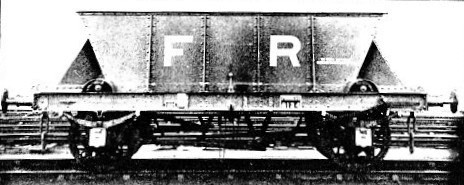
TWENTY- TON 4- WHEEL ORE WAGON. Showing patent fastening for bottom door (in centre above frame).
You can read more on “The London & North Western Railway” , “The Midland Railway” and “Railways and Publicity” on this website.
- Gift Vouchers
- Your Account
- Wishlist (0)

A Journey on the Cumbria Coast Railway 1 - Barrow to Whitehaven

Description
The Cumbria Coast Railway carries you on an intimate journey along one of the forgotten coasts of Britain. This DVD covers the section from Barrow-in-Furness to Whitehaven, surely one of Britain's great secret lengths of coastline. We've installed five cameras on a class 153 diesel multiple unit of Northern Rail to ensure you get the best view possible of the railway, the scenery and even the driver at work in the cab. The weather is perfect with blue skies, and the sea sparkles in the sunshine. Our journey begins in Barrow-in-Furness, once a centre for the UK's iron and steel industry, and now home to the builders of nuclear submarines, travelling on the old Furness Railway. There's little remaining of the peninsula's great industrial past, but the beauty of the coastline is breathtaking. We follow a long detour around the edge of the Duddon Estuary, which George Stephenson planned to cross on a mighty viaduct, and meet with the rails of the former Whitehaven and Furness Junction Railway close to Foxfield. From there we turn back south west, once again paralleling the coast towards Ulverston. To the north are the outliners of the Lake District mountains, and we squeeze between the might of Black Combe and the coast on the way to our next estuary crossing at Ravenglass. At the station, we glimpse the Ravenglass & Eskdale Railway, a narrow gauge line which runs outstanding miniature steam engines. North, we encounter the Sellafield nuclear site, the busiest station on our journey, and then it's on to St Bees, passing two sections of the line which have suffered serious subsidence and caused a derailment. Finally we pass through the long, curving tunnel at corkickle before emerging on to the platform at Whitehaven. Free Bonus Extra. Our DVDs are used by Northern Rail to help their drivers learn the route, and we've a special added feature for you to understand the journey as quickly as possible. We've re-interpreted the famous 1952 BBC film of London to Brighton in four minutes to bring you a high speed run from Whitehaven to Carlisle, viewed from the prime spot on the front of the class 153. It's the perfect way to round off this exclusive viewing experience.
Produced by - Creative Imagineers Running time - 84 minutes Format - 16:9 widescreen DVD only
You may also like...

Blackpool Transport: Palladium - The End of the Diesel Era by Michael Morton (Book)

A Train Spotter's Notebook: Volume 6 - Return To The Southern - Earlier Years

A Train Spotter's Notebook: Volume 8 - Duffle Bag and Weekends Away

Classic Liners Volume 1

Great Continental Railway Journeys: Series 5
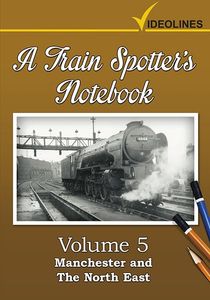
A Train Spotter's Notebook: Volume 5 - Manchester and the North East

Great American Railroad Journeys: The Complete Series 1
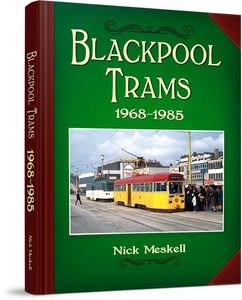
Blackpool Trams 1968-1985 (Book)

Class 37s in the Far West (Book)
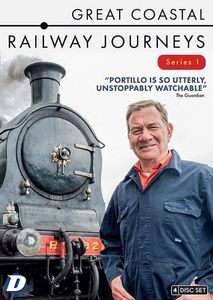
Great Coastal Railway Journeys: Series 1 (4 discs)
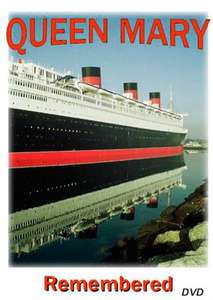
Queen Mary Remembered
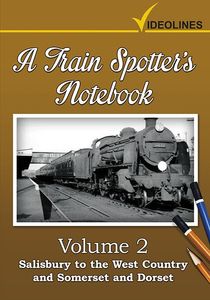
A Train Spotter's Notebook: Volume 2 - Salisbury to the West Country and the Somerset and Dorset
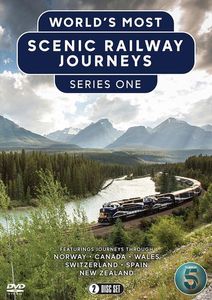
World's Most Scenic Railway Journeys: Series One

Northwest Mainline Steam 2017. Blu-ray
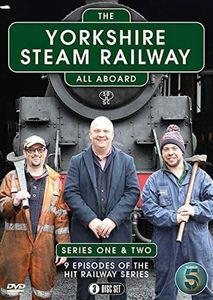
The Yorkshire Steam Railway: All Aboard - Series One & Two

37403 - West Highland Weekend. Blu-ray

The Supermarine Spitfire

A Train Spotter's Notebook: Volume 1 - Scotland

A Train Spotter's Notebook: Volume 7 - Up the Main and Other Routes

The Red Arrows
The item has been added to your basket.

Lost Journeys of the Furness Railway: Gone but not forgotten
- Post author: testsignal
- Post published: July 20, 2016
- Post category: Digital Art / Education & Training / Film Production / Uncategorized / Youth Opportunities
This July marked the end of our creative heritage project, funded by Heritage Lottery Fund. The Lost Journeys exhibition attracted 100s of visitors and featured stories, animations, films, oral history recordings and photography by local participants – sharing and celebrating the importance of the old train lines of the Furness area through creative media. A visitor said:
“It’s so interesting and beautifully presented, thanks to all the researchers and creative team for capturing this lost history. It brought back vivid memories. My Grandfather and great-grandfathers were both Furness Railway men”
The ground floor space at 104 Abbey Road hosted a collection of archive images courtesy of Cumbrian Railway Association; including rare glimpse of ‘Lost’ stations such as Island Road “Shipyard” Station, the Broughton to Coniston Branch, and Lindal-in-Furness. Also featured was a gallery of experimental photos using Furness Railway memorabilia in portrait photography, modelled by local teenagers, Thea Jones, Cameron Coles and Sally Cole.
[slideshow_deploy id=’5857′]
The purpose built installation room at 102 Abbey Rd hosted oral history recordings with local residents and vintage memorabilia on loan from Furness Railway collectors. Visitors could seat themselves on the reproduction Furness Railway bench and enjoyed still and moving images projected onto walls throughout the space.
[slideshow_deploy id=’5859′]
Experimental photos were developed during community Photography workshops, including work by Geraldine Scott, who used archive images of the lost stations to create a ‘Then and Now’ digital story which we displayed in the installation room. She said;
“Although I know that the merging of images is sort of a bit of cliché, in this context I thought it was an interesting and probably the most appropriate way to show the changes to the stations over time. I’ve been really inspired by this project, particularly by the historical aspect and the impact of it on people and the landscape. I was astounded to find the number of train stations here that had gone. Some I had never even knew existed. I was curious as to where they had been, what was left, and what they look like now. It’s because these stations used to be so important. People would come and go there everyday and they would have been a big part of their lives. I had loads of fun trekking around Furness taking photos, climbing up walls, over fences, trying to get the shot today that they were taken from, trying to match them up. “
[slideshow_deploy id=’5862′]
If you missed the exhibition please check out the project blog where you can view much of the film, photography and stories gathered during the project: furnessrailway.wordpress.com
You Might Also Like


Random Acts: Opportunity for creative young people & film-makers

Signal Scoop ‘Best Innovative Project Award’ at NOMS

New Project Launch ‘Window on Walney’

Registered Charity No. 1152012
Company Limited by Guarantee No. 6606718
Signal Film and Media, Cooke’s Studios
104 Abbey Road, Barrow-in-Furness
Cumbria, LA14 5QR
01229 838592

Documentaries
Great british railway journeys.
- Kirkby-in-Furness to Lancaster
Kirkby-in-Furness to Lancaster Great British Railway Journeys

Similar Content
Browse content similar to Kirkby-in-Furness to Lancaster . Check below for episodes and series from the same categories and more!
Barrow-in-Furness
George bradshaw, kirkby-in-furness, lancaster castle, lancaster, lancashire, michael portillo, port of barrow, victorian era, cockermouth to eskdale, heysham to snaefell, download subtitles.
You are using an outdated browser. Please upgrade your browser .
Moscow International Business Center (Moscow City)
- Guide to Russia
What can you do at Moscow City?
- Dine in style: Moscow City is home to 100+ cafes and restaurants, including Europe’s highest restaurant and ice-cream shop
- See Moscow like never before: Ascend to one of Moscow City’s observation decks for an unparalleled panorama of Moscow
- Admire world-class architecture: Each of Moscow City’s skyscrapers has distinctive architecture and design
- Learn something new: Visit the Museum of High-Rise Architecture in Moscow or the Metro Museum
Moscow City is a multifunctional complex in the west of Moscow, which has come to represent the booming business of Russia’s capital. Its skyscrapers enrich Moscow’s skyline, contrasting the medieval cupolas and Stalinist high-rises. Visitors to Moscow City can enjoy entertainment high in the sky, as the complex is home not just to offices, but to restaurants, cinemas, viewing platforms, and museums.
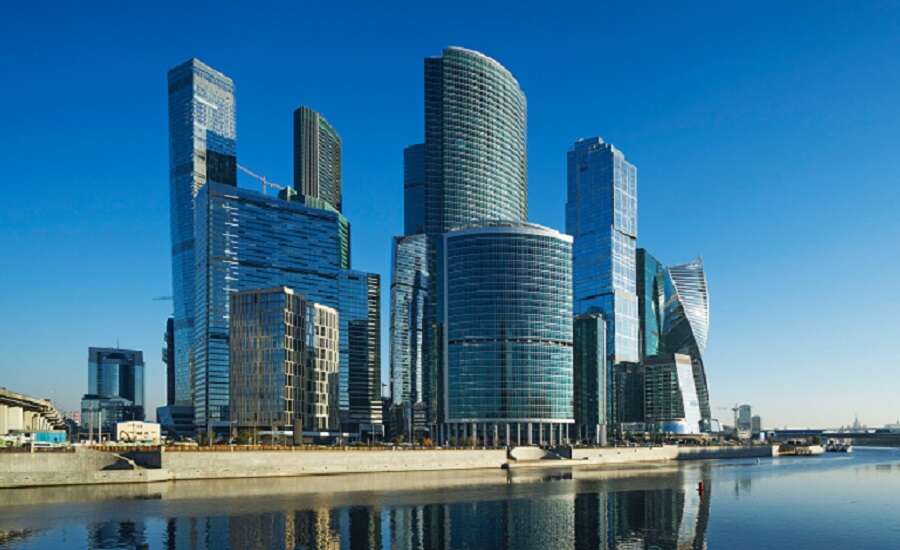
Photo by Alex Zarubi on Unsplash
History of Moscow City
Moscow City was first conceived in 1991 by honoured Soviet architect Boris Tkhor, who proposed to construct a business center in Moscow. It would be complete with gleaming skyscrapers rivalling those of New York and London, to reflect the new life and growing ambitions of post-Soviet Russia.
The chosen site was a stone quarry and disused industrial zone in western Moscow, in between the Third Ring Road and Moskva River. Initially, the territory was divided into 20 sections arranged in a horseshoe shape around a central zone. The skyscrapers would increase in height as they spiralled around the central section, with shorter structures built on the waterfront to give the taller buildings behind a view of the river.
Architect Gennady Sirota, who contributed to iconic projects such as the Olympic Sports Complex on Prospekt Mira, was selected as the chief architect, and many other world-famous architects were attracted to Moscow to realise their visions in Moscow City.
What can you see and do at Moscow City?
Where Moscow’s cityscape was once dominated by Stalin’s Seven Sisters skyscrapers , this is no more. Moscow City is home to eight of Russia’s ten tallest buildings, six of which exceed 300 metres in height. More buildings are still under construction there today, including the One Tower (which will be Europe’s second-tallest building). Once completed, Moscow City will comprise more than 20 innovative structures.
Each of Moscow City’s skyscrapers was designed by its own architect, lending the cluster of skyscrapers a unique appearance. Aside from being a site of architectural wonder, Moscow City is a place for leisure and entertainment with over 100 cafes and restaurants, exhibition spaces, cinemas, viewing platforms, and more.
Photo by Nikita Karimov on Unsplash
Federation Tower
- East Tower: 374m, 97 floors; West Tower: 243m, 63 floors
- Completed in 2017
- Architects: Sergey Tchoban and Peter Schweger
The East Federation Tower is the tallest building in Moscow, and the second-tallest building in Europe after the Lakhta Centre in St Petersburg. Visitors can enjoy a luxurious meal of seafood, truffles or steak at restaurant ‘Sixty’ on the 62nd floor of the West Tower, or visit Europe’s highest observation deck, ‘Panorama 360’, on the 89th floor of the East Tower.
Did you know? The ice cream and chocolate shop on the 360 observation deck are the highest in the world!
- South Tower: 354m, 85 floors; North Tower: 254m, 49 floors
- Completed in 2015
- Architect: Skidmore, Owings & Merrill LLP
The South OKO Tower is the third-tallest building in Russia and Europe. Here, you can visit ‘Ruski’ to dine on hearty Russian cuisine cooked on a real Russian stove, and have a drink in the ice bar. Alternatively, visit restaurant, nightclub and performance space ‘Birds’; the restaurant is the highest in Europe, situated on the 86th floor roof terrace alongside an observation deck. The OKO Towers are also home to karaoke club ‘City Voice’.
Did you know? Underneath OKO Towers is the largest underground parking in Europe, with 16 levels and 3,400 parking spaces.
Mercury Tower
- 339m tall, 75 floors
- Architects : Mikhail Posokhin, Frank Williams, Gennady Sirota
Another multifunctional skyscraper, which was designed as the first truly ‘green’ building in Moscow. The Mercury Tower has a distinct geometric shape and copper-coloured glazing, and was the tallest building in Europe upon completion. Visit ‘More i myaso’ (Sea and meat) on the first floor of the tower to enjoy European and Mediterranean cuisine whilst surrounded by greenery. On the 2nd and 40th floors a modern art gallery, the ‘ILONA-K artspace’, has just opened.
City of Capitals
- Moscow Tower: 302m, 76 floors; St Petersburg Tower: 257m, 65 floors
- Completed in 2009
- Architect: Bureau NBBJ
The unique geometric design of the City of Capitals towers resembles stacks of rotating blocks, and is rooted in Constructivism of the early Soviet period (many Soviet Constructivist buildings can be found in Moscow). Visitors to the Moscow Tower can enjoy a range of cuisines – traditional Italian dishes on the summer terrace of ‘Tutto Bene’, Panasian cuisine in the tropical luxury of the ‘Bamboo Bar’ on the 1st floor’, and poke or smoothie bowls at ‘Soul in the Bowl’ cafe on the 80th floor.
Tower on the Embankment
- Tower A: 84m; Tower B:127m; Tower C: 268m, 61 floors
- Completed in 2007
- Architects: Vehbi Inan and Olcay Erturk
After completion, the Tower on the Embankment was the tallest building in Europe, and is now the 13th tallest. It houses the headquarters of several large Russian and international companies, including IBM and KPMG. There are two cafes located on the 1st floor of Tower C – self-service café ‘Obed Bufet’ (Lunch Buffet) and Bakery Chain ‘Khleb Nasushchny’ (Daily Bread).
Evolution Tower
- 255m tall, 54 floors
- Architects: Philip Nikandrov and RMJM Scotland Ltd
Evolution is Moscow City’s most recognisable tower, and the 11th tallest building in Russia. Its façade is a true architectural marvel, comprising continuous strips of curved glazing spiralling high into the sky. According to the architect, Philip Nikandrov, the spiral shape of the tower honours centuries of architectural design in Russia, from the onion domes of St Basil's Cathedral to Vladimir Shukhov’s Tatlin Tower, a masterpiece of Constructivist design. Outside the Evolution tower is a landscaped terrace and pedestrian zone descending to the Presnenskaya Embankment, which was also designed by Nikandrov.
Did you know? Moscow’s largest wedding palace was supposed to be built on the site of the Evolution tower, though the project was abandoned.
- 239m tall, 60 floors
- Completed in 2011
Imperia’s interesting design has a curved roof and an arched glass façade. Inside the tower are various cafes including ‘City Friends’ for all-day breakfasts and light lunches, ‘Mama in the City’ for simple meals of Russian cuisine, and ‘abc kitchen’ for European and Indian-inspired dishes. Alternatively, visit ‘High Bar’ on the 56th floor for cocktails with a view. In Imperia you’ll also find the Museum of High-Rise Construction in Moscow (suitably located on the 56th floor), and the Camera Immersive Theatre.
Did you know? Inside Vystavochnaya metro station is the Metro Museum , dedicated to the history of the beautiful Moscow Metro!
- 130m tall, 26 floors
- Completed in 2001
- Architect: Boris Tkhor
Tower 2000 was Moscow City’s first tower. It stands on the opposite bank of the Moskva River, and houses a viewing platform from which visitors can admire an unparalleled panorama of Moscow City. The Bagration Bridge reaches across the river from the tower to Moscow City, and underneath are piers from where you can take boat trips.
Photo by Alexander Popov on Unsplash
Afimall is Moscow’s largest entertainment and shopping complex, home to 450 shops, cafes and restaurants, a cinema, and a virtual-reality game park. The shopping centre is located in the central section of Moscow City, and a cinema and concert hall are currently under construction there.
What’s nearby?
Sechenov Botanical Gardens: The botanical gardens of the First Moscow State Medical University was created for students’ training and research in 1946. Today it is open for free visits, and is home to a large arboretum.
Park Krasnaya Presnya: This park belonged to the Studenets estate of the Gagarin princes. It is a monument of 18th and 19th century landscaping, with Dutch ponds, ornate bridges, and tree-lined alleys. There are also sports facilities, sports equipment rental, and cafes.
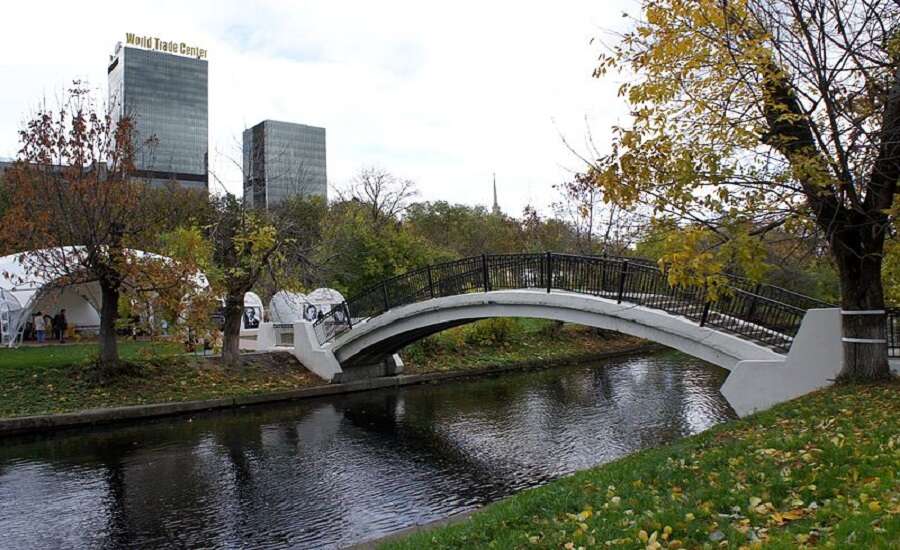
Photo by Akkit on Wikipedia
Essential information for visitors
Website: https://www.citymoscow.ru/
Email: [email protected]
Phone: +7 (495) 730-23-33
Nearest metro: Mezhdunarodnaya (closest to the skyscrapers), Delovoy Tsentr (underneath Afimall), Vystavochnaya (closest to Expocentre)
Related Tours

Moscow - St. Petersburg 3-star cruise by Vodohod
This is our most popular cruise covering Moscow and St. Petersburg and all of the significant towns between these 2 cities. Besides the Two Capitals, you will visit the ancient towns of Uglich, Yaroslavl and Goritsy, the island of Kizhi, and Mandrogui village.
Cruise Ship

Two Capitals and the Golden Ring
This tour covers the best sights of Moscow and St. Petersburg along with a trip to the Golden Ring - a group of medieval towns to the northeast of Moscow. Ancient Kremlins, onion-shaped domes and wooden architecture is just a small part of what awaits you on this amazing tour.
Accommodation
PRIVATE TOUR

Classic Moscow
This is our most popular Moscow tour that includes all the most prominent sights. You will become acquainted with ancient Russia in the Kremlin, admire Russian art in the Tretyakov Gallery, listen to street musicians as you stroll along the Old Arbat street, and learn about Soviet times on the Moscow Metro tour.
Our travel brands include

Express to Russia
Join us on Facebook
We invite you to become a fan of our company on Facebook and read Russian news and travel stories. To become a fan, click here .
Join our own Russian Travel, Culture and Literature Club on Facebook. The club was created to be a place for everyone with an interest in Russia to get to know each other and share experiences, stories, pictures and advice. To join our club, please follow this link .
We use cookies to improve your experience on our Website, and to facilitate providing you with services available through our Website. To opt out of non-essential cookies, please click here . By continuing to use our Website, you accept our use of cookies, the terms of our Privacy Policy and Terms of Service . I agree
AI At The Edge: The New Vanguard Of Railway Innovation

- Share to Facebook
- Share to Twitter
- Share to Linkedin
AI is transforming the railway industry, making it more efficient and safer, and showing how this historic industry is modernizing while holding on to its roots.
AI is revolutionizing railways and enhancing efficiency and safety, demonstrating how this historic industry stays relevant by integrating modern technology while preserving its heritage.
In a recent trip into the city, I found myself in the train station. I took in the quiet morning hours, as the city started to wake, the railway network slowly starting to pulse with life. I have always been fascinated with trains, whether watching a long freight train along the highway or traveling with my family.
What caught my attention, though, can be summed up in one word, progress. Over time the old reliable railway system has found a way to evolve, becoming a proving ground for one of the most significant technological leaps of our time: artificial intelligence (AI) at the edge. Cutting-edge AI is transforming the modern railway into a journey of efficiency and safety, demonstrating how a century-old industry can remain relevant by adopting modern technology while holding on to its roots.
The Dawn of a New Inspection Era
The railway industry, steeped in tradition, is undergoing a silent revolution. The catalyst is AI at the edge, which turns routine inspections into a seamless, almost invisible process. Once subject to rigorous manual checks, trains now glide through inspection portals where AI systems scrutinize every detail in real time. But this isn't just about catching faults—it's about preempting them, ensuring every journey is as safe as the one before.
From Finders to Fixers: Empowering the Workforce
The advent of AI at the edge is reshaping roles within the railway industry. Before, employees were finders of faults and safety issues through time-intensive manual inspections. Now, they are fixers, empowered by AI that identifies issues before they become problems. This shift optimizes workflows and enriches jobs, allowing staff to focus on higher-level tasks that ensure our railways run smoothly.
The Unseen Guardian
As passengers or users of the goods and services transported by railroads, we're often unaware of the intricate dance of safety and precision that unfolds behind the scenes. AI at the edge is the unseen guardian of this dance, operating tirelessly to analyze data and provide actionable insights. It’s a technology that doesn't sleep, ensuring that the trains that carry the nation’s supplies (or commuters), are watched over with an unblinking eye.
Duos Technologies Railcar Inspection Portal (rip ® ) is a great example of how this works. The rip ® is an innovative AI-driven approach to inspect trains in real time at full speed, including passenger trains traveling over 125 mph. Trackside Dell PowerEdge XR edge servers with NVIDIA GPUs run AI algorithms that capture and analyze 360-degree images of every train car in just seconds.
When the edge-based AI algorithms detect an anomaly, the system sends an alert to railroad personnel within 60 seconds so they can initiate the appropriate response. To learn more about this innovative technology, read the full Duos Technologies story .
The Scalability of Safety
One of the most compelling aspects of AI at the edge is its scalability. As railway networks expand, the AI systems grow with them, adapting to new challenges and learning from vast streams of data. As our cities grow, so does the capability of our railways to keep us safe, without the need for constant reinvention.
Leading the Way of Railway Transformation
Recently awarded a patent for this proprietary AI technology, Duos developed these high-performance offerings with input from rail industry experts. This advancement enhances safety for the public and railroad workers, who work tirelessly to inspect trains in all weather conditions and represents a significant step forward in the industry’s journey toward sustainability. It is rapidly becoming the standard for automated inspection in railroads, both in North America and beyond.
Overcoming the Challenges
Integrating AI at the edge into the fabric of railway operations requires a blend of visionary leadership, technological acumen, and a workforce adept in new systems. The industry is meeting these challenges head-on, investing in partnerships and training that pave the way for a seamless integration of AI into the railway's future. Listen to Jeff Necciai, CTO of Duos Technologies, share his perspective on the challenges that his team is working through in a recent episode of Dell’s Over the Edge podcast.
The Journey Ahead
The journey of AI at the edge is just beginning. It's a journey that promises not just a transformation of how we travel, but of how we think about transportation itself—a future where the efficiency of the edge is the standard, not the exception.
The potential of AI at the edge stretches far beyond railways into every industry that relies on the swift, safe movement of goods and people. Duos is working on a generative AI (GenAI) solution that will take automated railroad inspections at the edge to the next level and solve bigger problems, putting railroads at the forefront of innovation and environmental sustainability.
A Commitment to the Future
AI at the edge is more than a technological innovation; it's a new vanguard in the quest for a safer, more efficient railway network. It's a commitment to the future—a future where the romance of the rails is matched by the reliability of the edge. For those who are ready to embark on this journey, the destination is a smarter, safer, and more connected world.
Learn more about AI at the edge .

- Editorial Standards
- Reprints & Permissions
- Share full article
Advertisement
Supported by
The Maya Train Will Get You to All of Yucatán’s Best Spots. But Not Yet.
In December, the train began running on its first route through Mexico’s Yucatán Peninsula. On a five-day journey a few months later, the author encountered enthusiasm, and scheduling hiccups.

By Elisabeth Malkin
Elisabeth Malkin has been visiting the Yucatán Peninsula for three decades.
I stepped off the platform at the gleaming new Maxcanú train station, eager to see the magnificent Maya archaeological site of Uxmal. All I needed was a taxi to take me there, a trip of about 30 miles away.
There are no taxis, said the stationmaster, as we stood on the polished limestone floors of the high-ceilinged station, which was cool and breezy despite the brilliant late-morning sun outside. And I was the third person in two weeks to get off at Maxcanú expecting to reach Uxmal, he said.
I was midway through a five-day trip to explore the brand-new Maya Train and several of its destinations in the Yucatán Peninsula of Mexico . Designed to run 965 miles (1,554 kilometers) around a loop of 34 stations when completed, the train will whisk passengers in cool comfort through colonial cities, archaeological sites, splashy resorts and tropical forests.
Now I was stunned. Wrangling a taxi has never been a problem in Mexico. But the drivers gathered in the main square of Maxcanú offered only beat-up vans that hopscotch through small towns, where I might or might not find a taxi to Uxmal. The next van was leaving in 45 minutes.
Yucatán’s layers of history have long held me spellbound. During earlier car trips, I have clambered up deserted Maya temples and palaces, stepped into the cool naves of massive 16th-century churches and visited restored haciendas, testaments of the ostentation — and hardship — of the peninsula’s 19th-century plantation economy. Traveling by train, I thought, would allow me to steep myself in more of that history.
But as I found in Maxcanú, a train won’t necessarily get you to where you want to go.
During my February trip, I traveled on the only route then available, an east-west leg that opened in December and runs from Cancún to Mérida, and then south through the port city of Campeche to the Maya site of Palenque (a short route between Cancún and Playa del Carmen opened last month, with three trains a day). I encountered scheduling confusion, unfinished stations and a dearth of trains — just two operating daily each way between Cancún and Campeche, and only one to Palenque. Overnight sleepers and special dining trains seem years away.
President Andrés Manuel López Obrador considers the Maya Train his showcase development project, and wants to inaugurate the rest of the train before he leaves office on October 1. Based on my experience, that goal seems elusive.
A $29-billion route through the jungle
I started my journey in Cancún, where in the pre-dawn gloom the station hovered like a glowing spaceship. An attendant scanned the ticket I had bought online and a half-dozen more pointed me toward my tourist-class car, which was about a quarter full. I planned to go to Campeche, about 300 miles away, stopping once each day. At 120 kilometers (about 75 miles) an hour, the train covers the route in about six hours, the same as a car. (When construction is complete, the train’s speed should increase to 160 kilometers an hour.)
The car’s wide windows looked out at a wall of low jungle. The blue-green seats were comfortable and there was ample space between the rows. I bought a very good cappuccino at the snack bar, but declined the plastic-wrapped sandwiches. The rest of the merchandise was fruit cups, milk boxes and junk food.
The train will ultimately cost much more than the $29 billion budgeted so far, and it’s not the first time ambitious planners have alighted on the region. Cancún was once a tiny fishing village, selected half a century ago as a tourist hub. Last year 10 million international tourists flew into its airport, more than the airports of Mexico City, Los Cabos and Puerto Vallarta combined.
But uncontrolled growth has stressed the Caribbean coast’s fragile environment. The Maya Train, scientists warn , will push those problems south, threatening the area’s water supply, its unique system of underground limestone caves and its vast nature reserves.
Mr. López Obrador has charged ahead, handing the train over to the military , and arguing that it will spread Cancún’s wealth and attract new visitors. Mexico received more than 42 million overseas tourists last year and they spent almost $31 billion .
Local governments see an opportunity. “The train will allow people to disperse throughout the peninsula,” said Michelle Fridman, the tourism secretary for Yucatán state, which promotes dozens of attractions far beyond highlights like Mérida and Chichén Itzá .
Now that the train is operating, transport companies will begin to connect stations with lesser-known sites nearby, she said.
It’s fair to ask whether the train is the most effective way to develop the peninsula’s tourism. Tour companies already run trips to many sites from major cities, which are well served by buses. Driving a rental car through most of the area is considered safe , according to U.S. State Department travel guidance .
Route of Mexico’s Maya Train
Canceled trip.
It took two hours (and one time-zone change) to reach Valladolid, a colonial city of handsome streets and ancient churches, where I bought the rest of my tickets at the station. A tourist-class ticket from Cancún to Valladolid costs 472 pesos (around $28) for foreigners and 355 pesos (around $21) for Mexicans. First class, with wider seats, costs 755.50 pesos and 566.50 pesos, and discounts are available for older travelers and residents of the five states along the train’s route. (A first-class bus from downtown Cancún to Valladolid costs between 222 and 344 pesos, depending on the time of day, and takes half an hour longer.)
It was impossible to run the new Maya Train tracks into dense city centers and the Valladolid station, like the rest, was outside the urban core. A waiting bus took disembarking passengers downtown, a 15-minute ride for 35 pesos.
That day I toured Ek Balam , the site of a ninth-century Maya kingdom that is dominated by a 100-foot palace distinguished by a facade of carvings depicting winged warriors, stylized animal features and geometric patterns bordered by giant fangs. Admission to the site includes entry to the X-Canché cenote, one of thousands of limestone sinkholes that were sacred to the Maya.
Later that afternoon, I was wandering through the Museum of Ethnic Clothing, a private collection of traditional dress, embroidery and hats, when a WhatsApp message from the ticket office blinked on my phone. My train scheduled for the following day was canceled.
I decided to deal with the problem in the morning and enjoy the city. As I wandered past the antique shops and boutique hotels of the elegant Calzada de los Frailes, it was clear that Valladolid’s tourism, and the infrastructure to handle it, was well established. The Maya Train is simply an alternative way to reach a city that tourists discovered years ago.
‘We’re on the Tren Maya!’
In the morning, I found that my train had not been canceled, but the station for which I had a ticket, Tixkokob, was closed. I got off instead one stop earlier at Izamal, known for its ocher streets and the giant Franciscan convent of San Antonio de Padua, built atop the ruins of a pyramid.
During the 90-minute ride, I heard widespread enthusiasm among fellow travelers who expressed a willingness to give the train time to work out the kinks. “We’re an experiment,” said Oliva Escobedo Ochoa, 64, who was vacationing from her home in central Mexico.
Leticia Iliassich, 57, who is Mexican, was traveling with her Croatian husband along with relatives from Mexico and Croatia. They had initially been scheduled on an earlier train to Mérida that had been canceled. “We knew that it was a new project,” she said. “We don’t mind.”
The group had already sent a video to friends declaring, “We’re on the Tren Maya!”
At the Izamal station I hitched a 15-minute ride into the town center with a man who had asked me to take his photo alongside the train and his father. From there I negotiated a taxi to Hacienda San Lorenzo Aké, a working hacienda that still turns the fiber from an agave plant called henequén into coarse rope. Global demand for henequén, known as Yucatán’s “green gold,” brought fantastic wealth to the region in the mid-19th century, speckling the peninsula with more than 1,000 haciendas. ( Many are now sumptuous hotels.)
Where geometry, nature and the divine merge
It was during my third day that I found myself stuck in Maxcanú, after a 90-minute train ride from Izamal. The stationmaster, an army captain, offered me a ride to Uxmal, just as he had to the stranded tourists before me.
Eying Uxmal’s 4 p.m. final ticket sale, I accepted.
My situation made it clear just how distant the Maya Train’s promises are for tourists seeking to explore more of Yucatán. In time, that will change, said Ms. Fridman, the tourism secretary. “The idea is to have more hotels along the train line,” she said. “That will happen little by little.”
But Uxmal , among the most stunning of the Maya sites, made up for the inconvenience. Uxmal’s grand buildings are faced with intricate decorative masks as well as friezes in which geometry, nature and the divine merge. New plaques at each structure offer detailed information in English and Spanish, part of the government’s investment in improving displays at Maya sites for the train project.
Most tourists either take day trips by car or bus to Uxmal from Mérida or stay at one of three nearby hotels. As I finished dinner at my hotel, the dining room began to fill up: 47 Polish tourists had arrived.
Panama hats and a cramped van
My plan for the day was to go by taxi to Bécal, a town where Panama hats are woven in limestone caves to keep the fibers soft, and then pick up the afternoon train in nearby Calkiní for the port city of Campeche.
But I spent so much time watching the hat-making demonstration and then fitting my new hat and buying gifts that we set off with little time to reach the station. To my chagrin, I missed the train, the last one of the day.
On Calkiní’s central square, I found a van that was leaving for Campeche. Cost: 65 pesos. Time: about 1 hour and 20 minutes, similar to what I would have spent on the train. Of course, I was trapped in a cramped seat and had to listen to the driver’s choice of sentimental ballads, but I was dropped off in downtown Campeche, close to my hotel.
The next day, I toured the Museum of Maya Archaeology , an expertly curated collection that included haunting jade funeral masks, glyphs and delicate ceramic figures.
José Madrigal, 45, an engineer from Fremont, Calif., was trying to make Maya pottery interesting for his twin sons. The boys had just turned 5 and their birthday present had been a ride on the Maya Train. “They love trains,” Mr. Madrigal said. Then the family moved on, keeping up a brisk clip through the museum. They had another train to catch.
Should you take the train?
Yes, if you are traveling between larger stations. The train also offers a way to get to Palenque, which is harder to reach and has roads with security concerns. Travelers can stow bicycles on board.
To see train times, check the destinations on the website . You cannot buy tickets online more than a week in advance. But when you finally board, the ride is smooth — and the coffee is excellent.
Follow New York Times Travel on Instagram and sign up for our weekly Travel Dispatch newsletter to get expert tips on traveling smarter and inspiration for your next vacation. Dreaming up a future getaway or just armchair traveling? Check out our 52 Places to Go in 2024 .
Open Up Your World
Considering a trip, or just some armchair traveling here are some ideas..
52 Places: Why do we travel? For food, culture, adventure, natural beauty? Our 2024 list has all those elements, and more .
Mumbai: Spend 36 hours in this fast-changing Indian city by exploring ancient caves, catching a concert in a former textile mill and feasting on mangoes.
Kyoto: The Japanese city’s dry gardens offer spots for quiet contemplation in an increasingly overtouristed destination.
Iceland: The country markets itself as a destination to see the northern lights. But they can be elusive, as one writer recently found .
Texas: Canoeing the Rio Grande near Big Bend National Park can be magical. But as the river dries, it’s getting harder to find where a boat will actually float .
- India Today
- Business Today
- Reader’s Digest
- Harper's Bazaar
- Brides Today
- Cosmopolitan
- Aaj Tak Campus
- India Today Hindi
Orry shares pics of his train journey to Kodaikanal, internet is surprised
Social media influencer orhan awatramani, popularly known as orry, surprised fans with pictures of his train journey to kodaikanal. his post garnered over 98k likes..
Listen to Story

- Orry shared pictures of his train journey to Kodaikanal on Instagram
- His post went viral with over 98k likes and comments from curious fans
- Orry was seen posing for the pictures, wearing 'I am a liver' t-shirt
Orhan Awatramani, popularly known as Orry, shared pictures of him on a train, which went viral on social media. He surprised his fans with his Instagram post, shared earlier this week, in which he mentioned that he took a train to Tamil Nadu's renowned hill station, Kodaikanal.
The pictures he shared featured himself in his iconic "I am a liver" t-shirt while posing for the camera. A few images showed him posing inside the train, while the others stood in the corridor or were lounging on a berth.
In one of the pictures, he was also seen patiently waiting for the train to arrive at the station.
"The train to Kodaikanal," reads the caption of Orry's post.
View this post on Instagram A post shared by Orhan Awatramani (@orry)
Since being shared online, his post has garnered over 98k likes on Instagram. His curious fans filled the comments section with interesting thoughts.
"Why are you travelling by train when you can afford literally everything? Just curious," a person said. "Will he sit for 13 hours or will he get off at a station in between and catch a flight from the airport," another person said.
"Today, Orry is travelling via train. It means he is training," another made a light-hearted remark.
"Orry has to be one of the most down-to-earth, funny, cute, and most importantly, a genuinely good person to be a celebrity. Much love," another person said.


IMAGES
VIDEO
COMMENTS
Journeys: Furness Rail. We make the spectacular journey from Lancaster to Barrow-in-Furness on the historic and beautiful Furness Railway exploring its history, the area's mining heritage, and the sights along the way. Fri, Apr 28, 10:10 am. That's TV (UK) 60 mins. Journeys: Furness Rail.
Attractions along the Furness Line include: The Dock Museum. Built in a historic nineteenth century dock, the museum is home to a wealth of objects on the social and industrial history of the Furness area. Journey time - 19 minute walk from Barrow-in-Furness RSPB Leighton Moss Nature Reserve. Get closer to nature at this peaceful nature reserve.
The Furness line is a British railway between Barrow-in-Furness and Lancaster, joining the West Coast Main Line at Carnforth.A predominantly passenger line, it serves various towns along the Furness coast, including Barrow-in-Furness, Ulverston and Grange-over-Sands.It runs through Cumbria and Lancashire.. Regional services on the line start from Manchester Airport and Preston, while local ...
Whitehaven Station - 71000 Duke of Gloucester - 8th Mar 2008. Photo by Jan Fialkowski At Whitehaven the original fine Furness Railway station building erected by Paley & Austin of Lancaster was demolished in 1981 and replaced with the soulless structure we see here today. Several other large stations - such as Maryport - have been replaced with small and simple structures, and many of ...
Journey Time: 2 hours 20 minutes (fastest) Cost: Barrow to Carlisle £18.10 Off-Peak Day Return. Distance: 85 miles . Opening Times: 7 days a week . ... The village of 'Kirkby-in-Furness' grew as a result of the Furness Railway arriving in the 1850's. Modern day Kirkby lies on the shore of the Duddon Estuary and offers fine views to the ...
Description. Travel with us on the spectacular the spectacular Furness Railway from Lancaster to Barrow-in-Furness, crossing the shifting sands of Morecambe Bay. We've specially equipped a Class 153 DMU of Northern Rail with five cameras to let you have the best view of the journey. From the comfort of your armchair, watch the stunning scenery ...
Hello and welcome to the Cumbrian Coast & The Furness Railway Showcase Video Part 1. This first video focuses on the route between Millom and Barrow-in-Furne...
The Furness main line is shorn of its branches, with no originating freight except at Sellafield. The line does continue to provide one of the most delightful railway journeys in England as it skirts round the shores of Morecambe Bay and Irish Sea, seen on one side, with occasional dramatic views into the Lake District on the other.
The Cumbrian Coast Line is perfect for those wanting to explore the great outdoors with easy access to the Lake District National Park. Leave the train at St Bees for the start of Alfred Wainwright's famous coast-to-coast walk. For history lovers, explore the legacy of the line at Millom Discovery Centre, enjoy a trip on the Ravenglass and ...
Episode 4 of 20. Michael Portillo is in Cumbria, enjoying one of the most spectacular coastal railway journeys in Britain. He takes to the lake in Ulverston and hikes up Black Combe. Show more.
The Furness Railway (Furness) was a railway company operating in the Furness area of Lancashire in North West England. ... consequently a good walker might almost accomplish the journey on foot in the time. The company chairman (the Duke of Devonshire) subsequently conceded that several of the stations " until lately, were in a condition of ...
Barrow-in-Furness - Carlisle. Explore the hidden face of Cumbria passing the spectacular Lake District fells, quaint villages, rural countryside and stunning coastline. ... two branches from Machynlleth to Aberystwyth and Pwllheli the line boasts one of the most stunningly attractive coastal rail journeys in the country. Mayflower Line ...
Cumbrian Coast line. A Direct Rail Services Class 68 alongside a Class 37, seen at St. Bees in May 2018. The Cumbrian Coast line is a rail route in North West England, running from Carlisle to Barrow-in-Furness via Workington and Whitehaven. The line forms part of Network Rail route NW 4033, which continues (as the Furness line) via Ulverston ...
The Furness Line offers views across the stunning Morecambe Bay, a site of international importance for wildlife and birds. The bay has some of the highest tides in the world with shining sandbanks and mud flats all flanked by salt marshes, beaches, and low cliffs. ... all accessible from the train. Explore the Furness Line. Journey Time: 59 ...
February 13, 2024. — by. Mohana and Aninda. The Cumbrian Coast Railway connects Carlisle to Barrow-in-Furness along the scenic Cumbrian coast. It's no secret that we love a good train ride, so when Northern had a sale in January we snapped up tickets on the Cumbrian Coast Railways from Carlisle to Barrow-in-Furness for £2 each!
A Journey on the Furness Railway. £ 14.95. DVD. This DVD follows the spectacular route along the Furness Railway from Lancaster to Barrow in Furness, crossing the shifting sands of Morecambe Bay. You can choose to listen to the well researched commentary telling the history of the railway or switch it off to concentrate on the sights and ...
Here at Community Rail Cumbria we love our railways. Not only do they they provide the vital transport links between Cumbrian communities but they also reveal another side to the most beautiful County in England. There are three lines to choose from - the Lakes Line takes you into the heart of the Lake District at Windermere; the Furness Line ...
Modern Developments in the Furness Railway System. RAILWAYS OF BRITAIN - 54 A STANDARD EXPRESS TRAIN on the Furness Railway, hauled by 4-4-0 No. 37.FOR the first fifty years of its existence the Furness Railway had been almost solely a mineral line, and so prosperous was it that there had arisen little need to unduly trouble about the active development of the passenger traffic.
Blackpool Illuminations and the Trams. £9.95 Code: MX063. The Cumbria Coast Railway carries you on an intimate journey along one of the forgotten coasts of Britain. This DVD covers the section from Barrow-in-Furness to Whitehaven, surely one of Britain's great secret lengths of coastline.
The Lost Journeys exhibition attracted 100s of visitors and featured stories, animations, films, oral history recordings and photography by local participants - sharing and celebrating the importance of the old train lines of the Furness area through creative media. ... Also featured was a gallery of experimental photos using Furness Railway ...
Today's leg of the journey starts in Kirkby-in-Furness 0:01:57: 0:02:01: and then hugs the west coast, circumscribing Morecambe Bay, 0:02:01: 0:02:04: culminating in the city of Lancaster. 0:02:04: ... such as the Furness Railway widened their remit, 0:19:04: 0:19:07: from ferrying industrial traffic to embrace the carrying of fare-paying ...
The Cumbrian Coast & Furness Railway - Version 1.3 (Updated 21/01/22) The Cumbrian Coast & Furness Railway V1.0 is an 80 mile route covering the lines from Preston to Morecambe,Heysham Harbour and most importantly Barrow-In-Furness and Millom. The portion of route south of Carnforth is a revamped version of the WCML Over Shap route,with the ...
The government has released plans to shift up to 60,000 people a day by buses during the T3 rail line's planned 12-month closure from July. Commuters face bus pain as journey times blow out for ...
255m tall, 54 floors. Completed in 2015. Architects: Philip Nikandrov and RMJM Scotland Ltd. Evolution is Moscow City's most recognisable tower, and the 11th tallest building in Russia. Its façade is a true architectural marvel, comprising continuous strips of curved glazing spiralling high into the sky.
Cutting-edge AI is transforming the modern railway into a journey of efficiency and safety, demonstrating how a century-old industry can remain relevant by adopting modern technology while holding ...
In December, the train began running on its first route through Mexico's Yucatán Peninsula. On a five-day journey a few months later, the author encountered enthusiasm, and scheduling hiccups.
Orry shared pictures of his train journey to Kodaikanal on Instagram; His post went viral with over 98k likes and comments from curious fans; Orry was seen posing for the pictures, wearing 'I am a liver' t-shirt; Orhan Awatramani, popularly known as Orry, shared pictures of him on a train, which went viral on social media. He surprised his fans ...